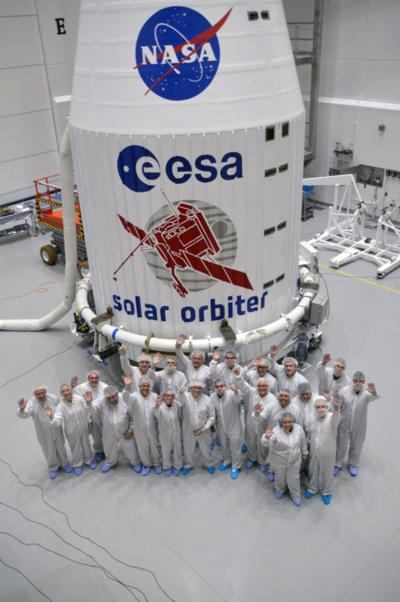Fri, Feb 07, 2020
ESA Sat Will Revolutionise Understanding Of The Sun
Solar Orbiter has been fitted inside the protective fairing, mounted on top of the launcher and is now ready to fly from Cape Canaveral in the evening of 9 February. The next time the satellite will see the Sun will be when it’s in space on its journey to the centre of the Solar System. The European Space Agency (ESA) mission will revolutionise understanding of how the Sun creates and controls the giant bubble of plasma surrounding the Solar System and influences the planets within it.

Solar Orbiter has 10 in-situ and remote sensing instruments to take photographs, spectra, measure solar wind plasma, fields, waves and energetic particles very close to the Sun.
The UK built spacecraft will make a close approach to the Sun every five months; at its closest approach Solar Orbiter will only be 42 million km away, closer than the planet Mercury. During these times it will be positioned for several days over roughly the same region of the Sun’s surface, as the Sun rotates on its axis. This will enable unprecedented observations of magnetic activity building up in the atmosphere that can lead to powerful flares and eruptions.
The spacecraft will use gravity assist manoeuvres at Venus to achieve its elliptical operational orbit and further fly-by manoeuvres to increase its inclination to view the Sun from the Polar Regions for the first time in history.
Solar Orbiter will have to endure temperatures of more than 500°C, hot enough to melt lead. Its heat shield, with a coating called SolarBlack, will continually face the Sun, protecting the sensitive instruments behind it, some of which still require heaters to keep them warm and at optimum operating temperature.
Ian Walters, Airbus’ programme manager for Solar Orbiter said: “After eight years of design and manufacture, Solar Orbiter is now ready to launch and to study the Sun as never before. Everyone in Airbus is excited and just a little apprehensive as we approach the day when the spacecraft starts its journey to the Sun.”
ESA selected Airbus Defence and Space, Stevenage to design and build Solar Orbiter in 2012.
More News
Pilot Applied Full Aft Stick And Nose-Up Trim, But The Airplane Remained On The Runway Analysis: The pilot reported that a preflight inspection and flight control checks revealed n>[...]
A Few Questions AND Answers To Help You Get MORE Out of ANN! 1) I forgot my password. How do I find it? 1) Easy... click here and give us your e-mail address--we'll send it to you >[...]
From 2022 (YouTube Edition): Before They’re All Gone... Humankind has been messing about in airplanes for almost 120-years. In that time, thousands of aircraft representing i>[...]
Advanced Air Mobility (AAM) A transportation system that transports people and property by air between two points in the NAS using aircraft with advanced technologies, including el>[...]
Aero Linx: MQ-1B Predator The MQ-1B Predator is an armed, multi-mission, medium-altitude, long-endurance remotely piloted aircraft that is employed primarily as an intelligence-col>[...]
 NTSB Final Report: Douglas A-4K
NTSB Final Report: Douglas A-4K ANN FAQ: Q&A 101
ANN FAQ: Q&A 101 Classic Aero-TV: PBY Catalina--From Wartime to Double Sunrise to the Long Sunset
Classic Aero-TV: PBY Catalina--From Wartime to Double Sunrise to the Long Sunset ANN's Daily Aero-Term (07.01.25): Advanced Air Mobility (AAM)
ANN's Daily Aero-Term (07.01.25): Advanced Air Mobility (AAM) ANN's Daily Aero-Linx (07.01.25)
ANN's Daily Aero-Linx (07.01.25)



